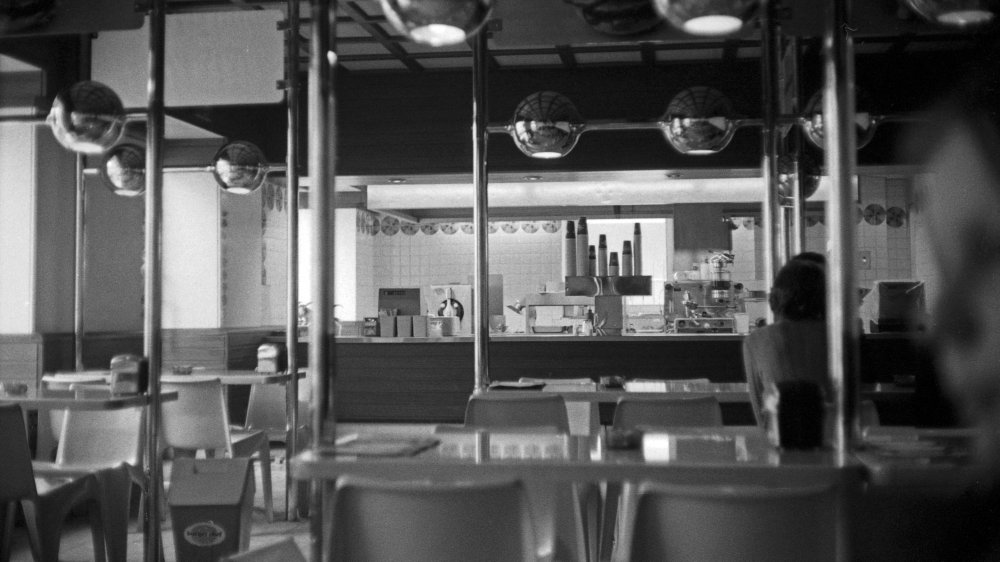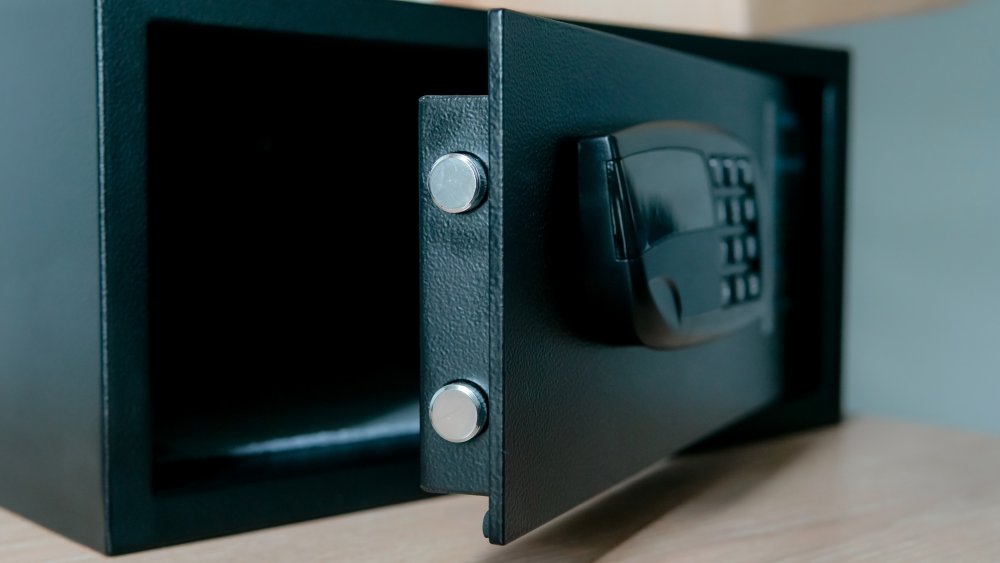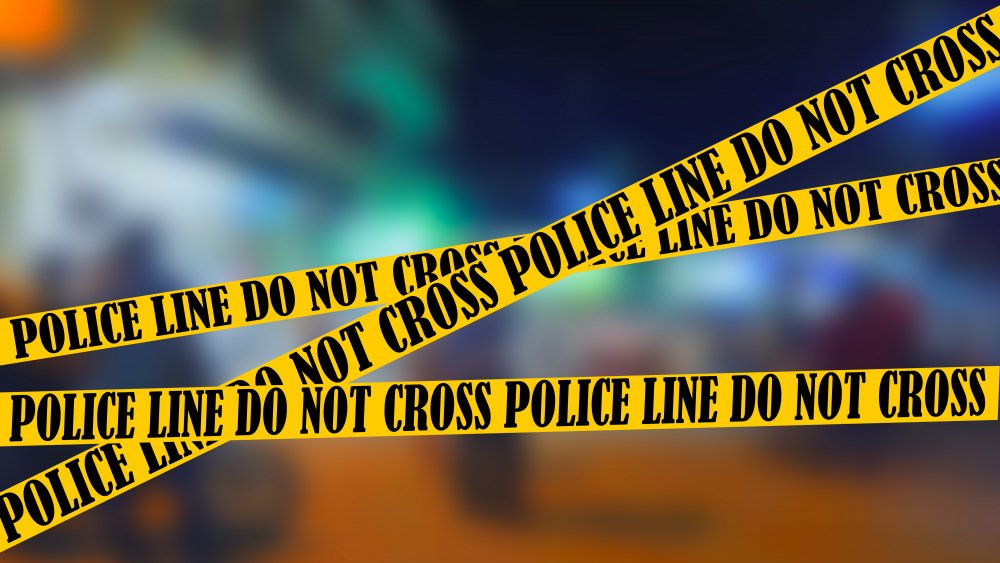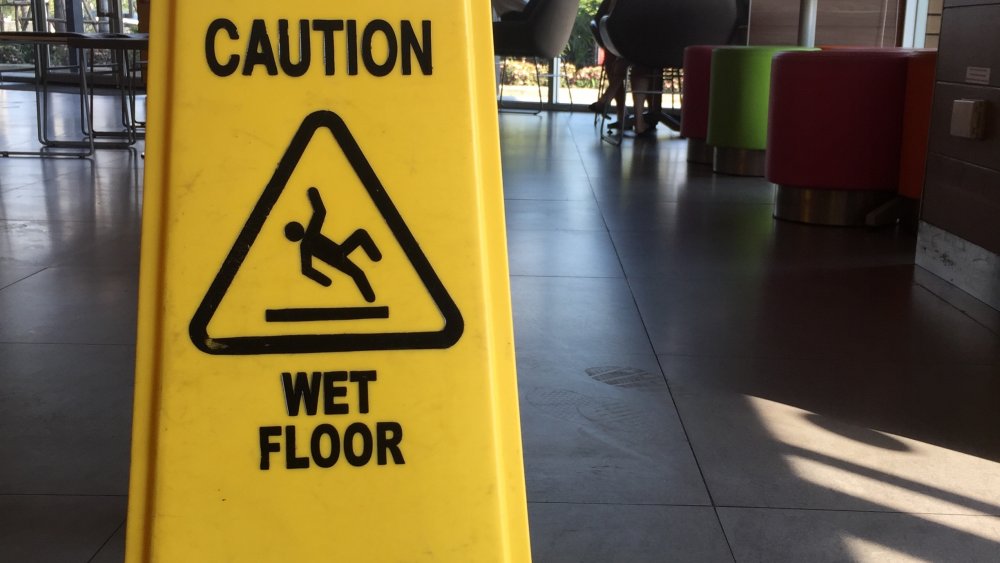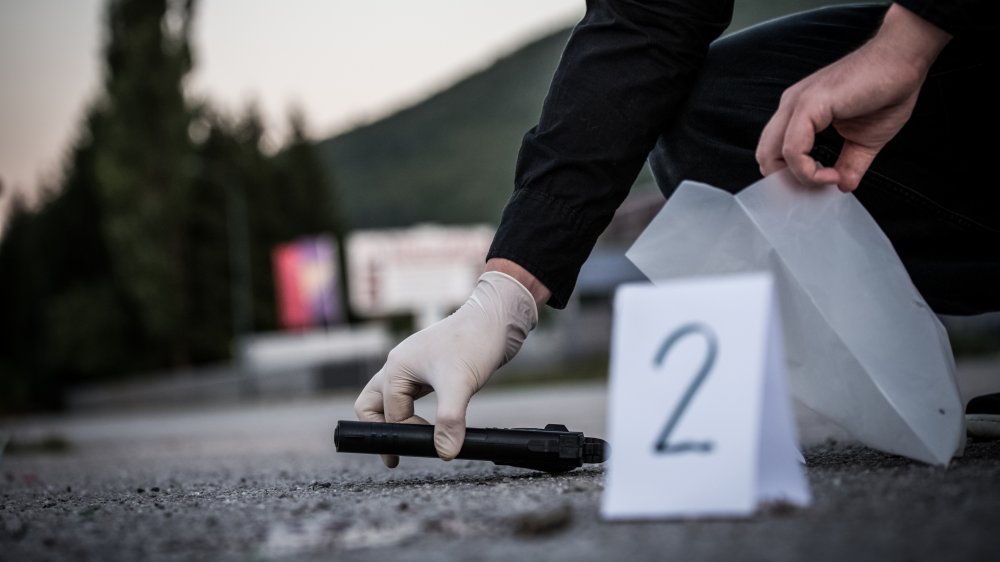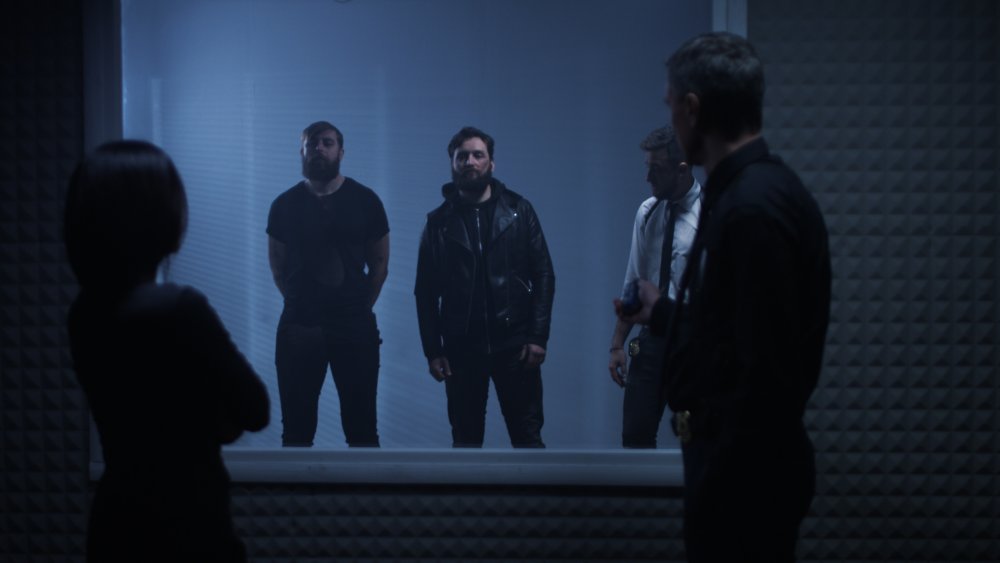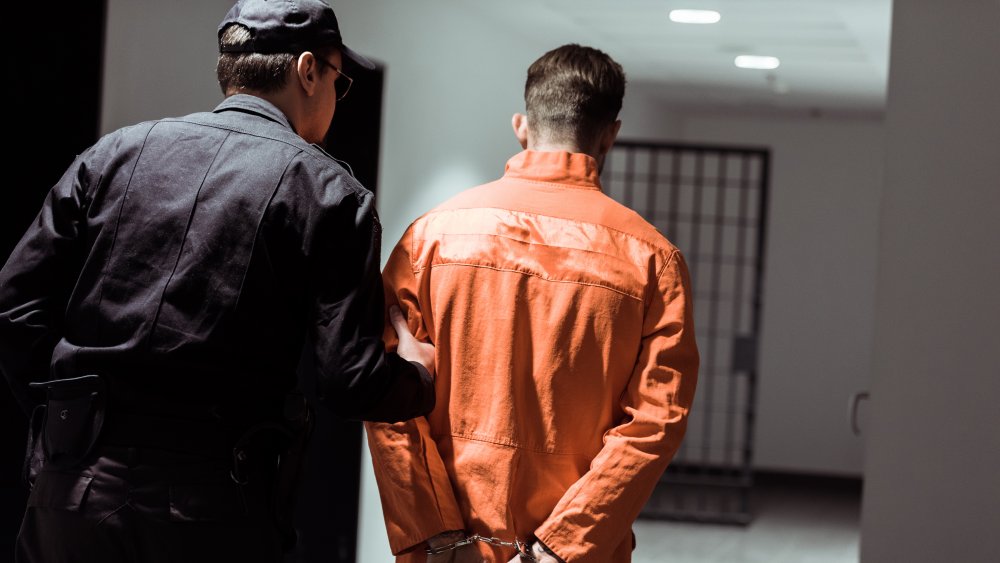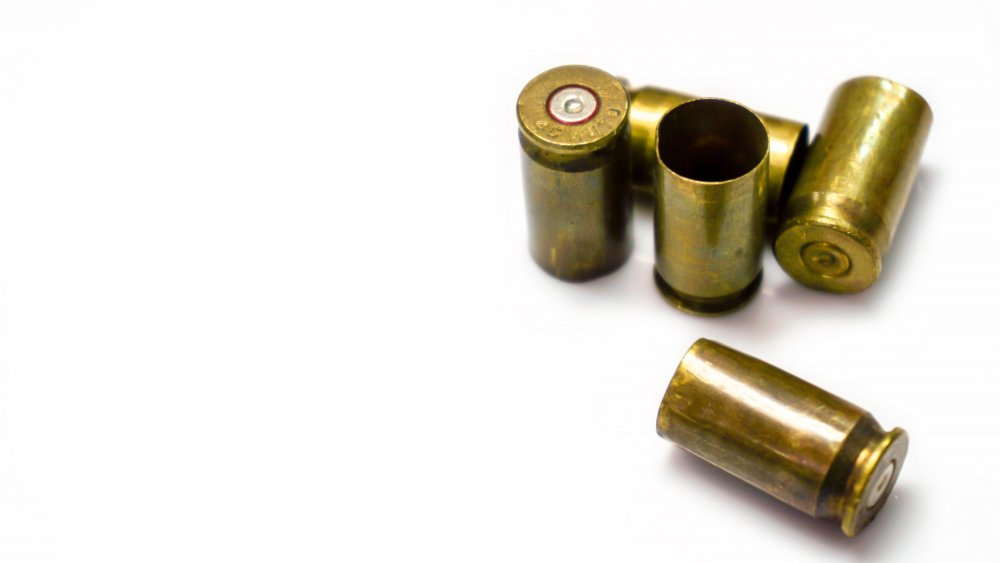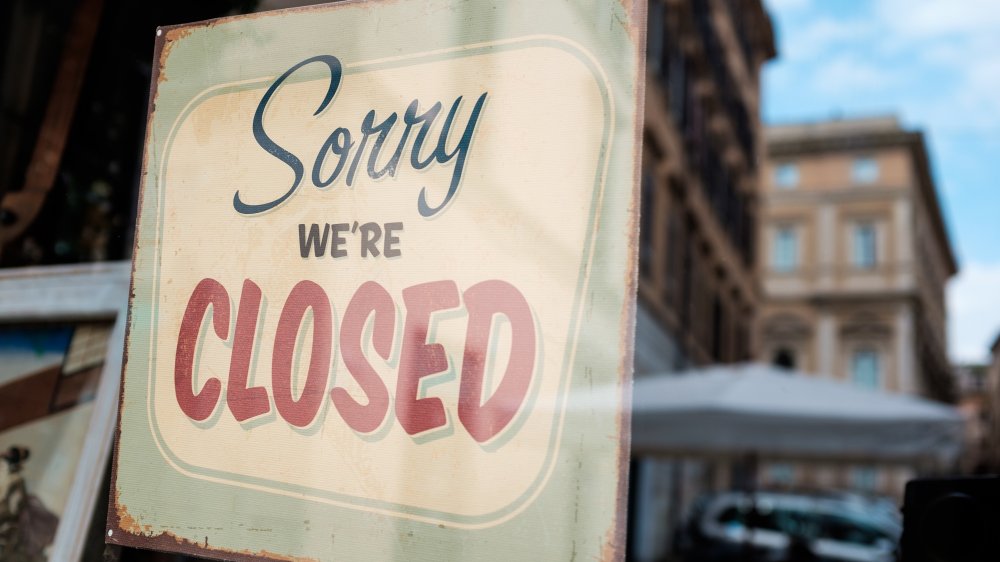The Untold Truth Of The Burger Chef Murders
Growing up, adults might have told you that certain jobs were "dangerous," and while convenience store clerk, bank teller, or pawn shop employee might have topped the list, one you might not have heard as much about is a fast food employee. Fast food restaurants get held up all the time. That's not to say they're deadly per se, as most of these robberies end with no one getting hurt at all.
There are, of course, far more dangerous jobs, but the difference is those jobs tend to carry a certain amount of respect, whereas fast food workers (or convenience store clerks or pawn shop employees) carry next-to-none. We've collectively spent the last decade or so arguing about how much or how little we should value these members of society, and to say it gets heated would be an understatement.
This isn't a new phenomenon, though, and even in past decades fast food workers have been confronted with assumptions about their jobs and work ethic. In one particular case from 1978, though, these assumptions might have led to some murderers walking free.
Just another night at the drive-thru
On November 17, 1978, it was just another Friday night at a Burger Chef restaurant in Speedway, Indiana. While Burger Chef used to be a major chain, competing with the likes of McDonald's, it's largely forgotten today since it fizzled out in the early 1980s. In fact, the events of this particular night are probably one of the biggest reasons people still remember Burger Chef today.
Four employees staffed the restaurant that night, according to Indianapolis Monthly: 20-year-old assistant manager Jayne Friedt, 17-year-old Ruth Ellen Shelton, and Daniel Davis and Mark Flemmonds, both only 16. It had been an ordinary evening, and the four closed up the store for the night at 11 PM. This was the last time the four were confirmed to be in the store.
At midnight, an unnamed fellow employee who planned to meet up with the four later that night dropped by, but they immediately noticed that something seemed wrong. The rear door of the store, which should have been locked, stood wide open. When they entered the restaurant, they found the safe was also open and completely empty. The registers had also been cleared of cash. The four employees who were supposed to be working that night were nowhere to be found, and Jayne Friedt's white Chevy Vega wasn't parked outside, either.
Just a minor crime
Speedway police arrived on Saturday morning, November 18, to investigate the robbery and missing employees. They noted the safe and back door were open and that the store was empty of cash. In all, $581 were missing, according to Indianapolis Monthly. It wasn't a small amount in 1978, but it wasn't enough for police to make a big deal over, either. It still meant the crime was in petty theft territory.
In fact, the police initially suspected that there hadn't been an actual robbery at all. Their theory was that the four employees, bored on a Friday night and tired of working a menial job, might have simply lifted the cash themselves, abandoned the store, and went out to party. Near the safe, police found two empty currency bags, a used-up roll of tape, and the previous night's coins left behind, according to true crime writer Lori Johnston. Only the bills were taken, which the police took as further evidence of their joyride theory.
There were some other things left behind, too, though. The two female employees' purses were found at the store, as were the employees' jackets. While mid-November in Indiana isn't exactly sub-zero temperatures, it's certainly chill enough to need some sort of coat. Police dismissed the oddness of these forgotten items, though, as there was no sign of a struggle. They left the scene and expected the four to show up sometime later that day.
Things started to look worrying
As November 18 wore on, though, the employees' families began to worry, as none of the four had come home and had yet to be located, according to Indianapolis Monthly. If the four had taken the cash themselves and went out for a night of fun, where were they now? Authorities in Speedway continued to hear from the Burger Chef employees' families throughout the day, expressing their concerns that none of the missing employees had turned back up nearly 24 hours later.
Things took a much darker turn when Jayne Friedt's white Chevy Vega showed up, parked in the middle of town. The driver's side door was locked, but the passenger side was not, according to Lori Johnston. Friedt herself was nowhere to be found, and no evidence was found in the vehicle that seemed to indicate where the missing employees had gone. For all intents and purposes, the car looked abandoned, not like its owner had been out all night and had since come back home.
Police finally began to consider that the four missing Burger Chef employees hadn't disappeared of their own volition, but instead had been kidnapped by the robber or robbers who had hit the store the previous night. The case changed from a simple robbery into a kidnapping case, and a day had already passed since the victims had gone missing.
Lost in the woods
On Sunday, November 19, 1978, authorities heard from a couple who had been walking through the woods 20 miles away from the Speedway Burger Chef, according to Indianapolis Monthly. They had found four corpses in an isolated spot in the forest. Police arrived to find the bodies of the missing employees, each still wearing their Burger Chef work uniforms.
Ruth Ellen Shelton and Dan Davis had both been shot in the backs of their heads, execution style. Jayne Friedt had been stabbed twice in the chest. The stabs were so forceful that the perpetrator's knife had broken off inside her chest, losing its handle. Mark Flemmonds had asphyxiated on his own blood after being left on his back. Examiners determined that Flemmonds had suffered massive blunt-force trauma from what appeared to be a chain, but the murder weapon couldn't be confirmed. It's not unreasonable to think that Flemmonds might have lived if the murderer(s) hadn't left him on his back, and so he could potentially have identified the person or people who attacked the four of them.
The four were determined to have died sometime on Friday night or early Saturday morning. A search of the crime scene turned up nothing. The gun, knife handle, and chain (or any other blunt objects that matched Flemmonds' wounds), were not found after a thorough search of the area.
A terrible mistake
The murder weapons weren't the only missing evidence, though. Because the initial crime looked like a simple robbery, authorities who initially reviewed the scene made a critical mistake that ended up hampering investigatory efforts at best and outright allowed multiple murderers to go free at the worst.
Instead of taking the time to close the restaurant and carefully going over the scene, police told Burger Chef employees that they could re-open on Saturday, November 18, according to Indianapolis Monthly. Police took no evidence from the scene before allowing it to be contaminated by other employees and untold numbers of customers the following day. No fingerprints were lifted, no hair or fibers were taken, nothing. At least they had photos.
Except, not really. Later investigators helping out on the case noticed that there were some oddities in the photos, like the time of day and the locations of some objects, according to Insider. After bringing this up, Speedway police admitted that they had staged the photos after they failed to take any during the initial look at the crime scene. They returned to the Burger Chef some time later, set things up from memory, such as the currency bags, and snapped photos then, something reporters and the public would later decry as insufficient and downright unethical police work. Investigators had no physical evidence whatsoever in the case, something that caused numerous problems as the investigation wore on.
The apocalyptic year of Speedway, Indiana
Citizens of Speedway, Indiana weren't just worried about the Burger Chef murders in 1978. This was one of several violent crimes that occurred in the otherwise sleepy town that year. Things started in July, when a 65-year-old woman named Julia Scyphers was murdered in her own garage by an unknown assailant, according to Insider.
Then, in September, a series of bombings rocked the town. Small explosives created from soda cans were detonated in Speedway, eight in all, according to Indianapolis Monthly. While most went off without harming anyone, the final bomb did injure Carl DeLong, a Vietnam War veteran who lost his leg as a result. Initially these two crimes were suspected to be related to the Burger Chef murders, though it turned out that neither was connected to that crime. They were connected to each other, though, according to the Indy Star.
The soda can bomber was discovered to be a man named Brett Kimberlin, a local musician who authorities believe perpetrated the bombings to distract from investigations into Julia Scyphers' murder, which Kimberlin had arranged because Scyphers openly suspected him of having inappropriate intentions for her underage granddaughter. Scyphers' murderer was never apprehended, but a friend of Kimberlin's, William Bowman, was a prime suspect. It was with this cloud of unease hanging over Speedway, Indiana that the Burger Chef murders occurred.
You may not even have heard of the Burger Chef murders
While Speedway, Indiana was rocked by the murders and bombings in their city, if you live outside of Indiana, there's an excellent chance you never heard about the Burger Chef incident. How could such a shocking case fly completely under the radar of most Americans?
The Burger Chef kidnappings happened on November 17, 1978. The very next day, a massive story gained worldwide attention, according to Indianapolis Monthly. A charismatic religious leader (and coincidentally, a fellow Indianan) named Jim Jones had founded a commune in 1974 called Jonestown, located in the South American nation of Guyana, and on November 18, 1978, over 900 people lost their lives there.
What made this a big story was how they died. Jones had convinced his followers that the U.S. government was planning to invade their commune, a paranoid fantasy that Jones held. Things went sour after a Congressman visited Jonestown to investigate allegations that Jones was running a cult and not allowing people to leave. When this visit ended in the Congressman's murder, Jones forced hundreds of his followers to knowingly ingest drinks poisoned with cyanide, the largest mass suicide in history. The story coming out of Jonestown simply overshadowed the Burger Chef case outside of Indiana, according to writer Terry Everton.
A potential break in the case
Things looked hopeless until authorities were tipped off by a witness who had been near the Burger Chef that night, according to Indianapolis Monthly. The witness said they saw a car with two men in it just before the restaurant closed. One of the men had a beard and the other was clean-shaven with fair hair.
Based on the descriptions, police created sketches and then even had those sketches made into clay models. After releasing the sketches and photos of the models, though, they still had no leads. That was until a few weeks after the murders. Reportedly, a man in a bar was overheard bragging about being involved in the murders. Police tracked down the man from the bar to question him. It turned out he was lying, but he did give police names of people he heard were involved.
Investigating these names, law enforcement found that one of them resembled the bearded man seen just before the Burger Chef murders. They brought in the witness and called the bearded man in for a lineup, but when he arrived at the station that morning, he had shaved off his beard, according to Lori Johnston. Without his beard, the eyewitness couldn't definitively recognize him, and so police were forced to let him go.
Things go very quiet
The Speedway Burger Chef murder investigation effectively came to an end. They had some suspects, but no evidence or witnesses to tie them to the scene. Things went quiet for six long years, until out of the blue, law enforcement had a brand-new lead. In 1984, an inmate at Pendleton Correctional Facility in Pendleton, Indiana reached out to the investigators to confess his involvement in the crime, according to Indianapolis Monthly.
The inmate, Donald Forrester, said he was there the night of the Burger Chef murders and had even participated directly in the killings. According to Forrester, Jayne Friedt's brother, James, was involved in the local drug trade and owed someone a lot of money. This person had hired Forrester and his compatriots to go to the Burger Chef and threaten Jayne as a way of scaring James into paying his debts.
Things went wrong, though. Mark Flemmonds intervened and started a fight with the men, which ended when he fell and hit his head on the bumper of a car. Thinking they'd killed him, the men kidnapped the other three employees in the store and drove them to an isolated spot in the woods where they carried out the killings. Forrester was able to give specific details of the crime and take authorities directly to where the bodies were found. He even knew that the knife used to kill Jayne Friedt had lost its handle, a fact not made public at the time.
Things begin to turn around
Law enforcement had good reason to suspect that Forrester was telling the truth, and in the course of investigating his claims, they spoke to his ex-wife, who told them an incredible story. She claimed that within a few days of the Burger Chef murders, Forrester drove to an isolated spot in the woods, approximately where the four bodies were found. She had been in the car with him and watched as he went around the area, picking up a number of .38 shell casings according to Indianapolis Monthly. Later that same day, after returning home, Forrester's ex-wife said that he flushed the shell casings down the toilet.
Police checked this out. Their former home had a septic system, but it was now owned by someone else. After getting a warrant, authorities excavated the septic tank and searched inside, finding some .38 shell casings just like Forrester's ex-wife had said. This was the biggest break the case had in years.
And then everything turned upside-down on November 14, 1986, nearly eight years to the day after the murders, when someone inside the police force leaked to the media that Forrester was cooperating in the case and they might be close to making arrests. Once Forrester found out his assistance was now public knowledge, he immediately recanted his confession and refused to speak further on the matter ever again. Forrester died in prison in 2006.
Things come to an end
After Donald Forrester recanted his confession and stopped talking to police, the investigation finally dried up. There were no more leads, and everything promising that came up in the course of the investigation had been frustratingly dead-ended. This is where things are today, over 40 years later. There were no arrests made in the Burger Chef murders. Whoever murdered those four people got away with it scot-free. While there is no statute of limitations on murder in Indiana, according to Indianapolis Monthly, the chances of any new information turning up four decades after the crime is highly unlikely.
And then there's the fact that even the most incredible possibility, Forrester's confession, may have been a hoax. At least one investigator, Jim Cramer, an Indiana state trooper at the time, believes there's an excellent chance that Forrester was lying in hopes of garnering better treatment in prison, according to Insider. While he had some knowledge of the events, it never actually proved he was there. As a convict in the prison system, it's possible that Forrester heard about the details from someone who actually was there. The .38 shells found in the Forrester's septic tank might have been from something unrelated.
Since Forrester stopped talking, there was no physical evidence, and things like DNA testing didn't exist in 1978, the investigation was stymied at every turn. It's highly possible that police never even got close to finding the real perpetrators of the Burger Chef murders.
What happened to Burger Chef?
Burger Chef, which had been within striking distance of being a major competitor to other fast food chains like McDonald's, Burger King, and Wendy's, simply fell apart in the early 1980s according to MeTV. Specifically, it was sold to Hardee's in 1982, and the vast majority of Burger Chef restaurants were rebranded to be Hardee's instead. A few stores did continue operating under the Burger Chef name for a few years afterward, but by the end of the 1980s, Burger Chef was effectively forgotten.
The chain had already experienced some hardships before the Burger Chef murders. While they had been very successful in the earlier half of the 1970s, by 1978, things were beginning to slow down, with fewer new stores opening and profits starting to slump. But even with that in mind, it's very likely that the bad publicity from the Burger Chef murders put the final nail in the company's coffin. It's possible that they could have turned things around if not for the murders. Lots of companies go through similar rough patches and emerge just fine.
While the Burger Chef murders weren't nearly as big of a news story as they could have been, it seems that at least some people began to subconsciously equate the chain with violence and crime, thus avoiding it and sending it into further decline. To paraphrase writer Terry Everton, four young workers died on November 17, 1978, and so did the Burger Chef chain.
